After years of talk and delays, the sequel to James Cameron’s Avatar is finally here in a follow-up that manages to jump ahead in almost every way.
Avatar: The Way of Water
Directed By: James Cameron
Written By: James Cameron, Rick Jaffa, Amanda Silver
Starring: Sam Worthington, Zoe Saldaña, Stephen Lang, Sigourney Weaver, Kate Winslet, Cliff Curtis, Jack Champion
Release Date: December 16, 2022
My love of Avatar is no secret. For years it’s a hill I’ve been more than willing to die on, especially as the sequel, The Way of Water, came closer to actually releasing. Cries of “Avatar had no cultural impact” have been abundant online for years, and only increased as marketing on the sequel began ramping up. I was always on board, however, and even as the trailers refused to show more of the story (gorgeous as they were), my hype remained intact.
Thankfully, Avatar: The Way of Water ruled in ways I couldn’t imagine.
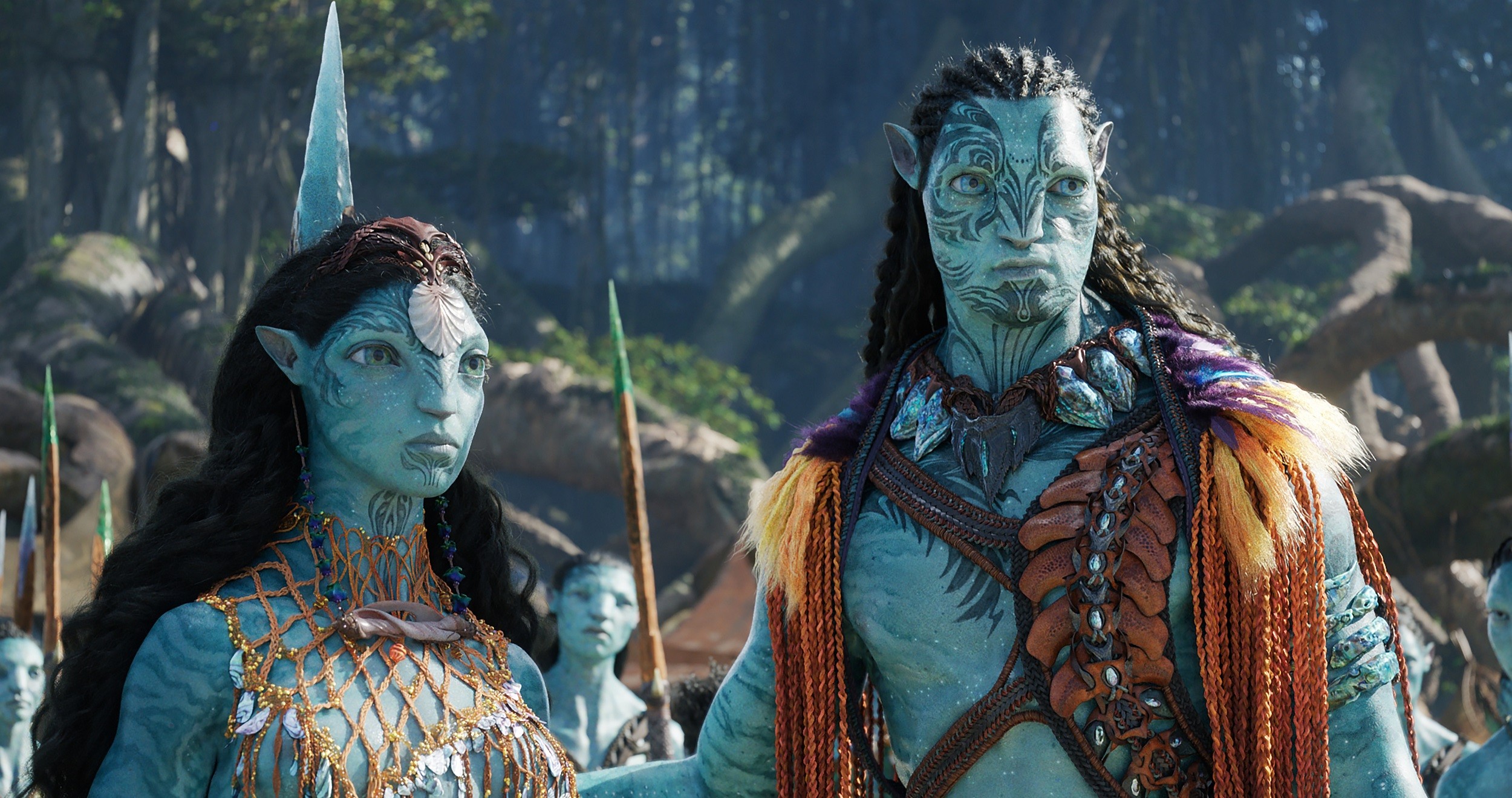
A New Side of Pandora
As I always do, I’m going to keep this review mostly spoiler free. That said, I think there are some minor details I’ll have to get into. Normally, I would stick to story beats only revealed in the trailers/marketing, but those revealed almost NOTHING about the new story. As such, I kinda need to spoil a couple things that happen early on in order to discuss…well, anything. So if you’ve wanting to go into The Way of Water completely fresh, perhaps come back to this review after checking it out this weekend. And yes, you SHOULD watch it this weekend if possible.
The Way of Water picks up the story a few years after the end of Avatar. For those who haven’t watched the film in a while, the first few minutes does a decent job of recapping a few things so the new stuff makes sense. I’ve watched the film somewhat regularly over the years, but my 13-year-old son has not. We didn’t have a chance to re-watch before the screening, but at no point did he really feel lost in the new story being told. So if you’re a bit rusty on your Pandora lore, don’t worry.
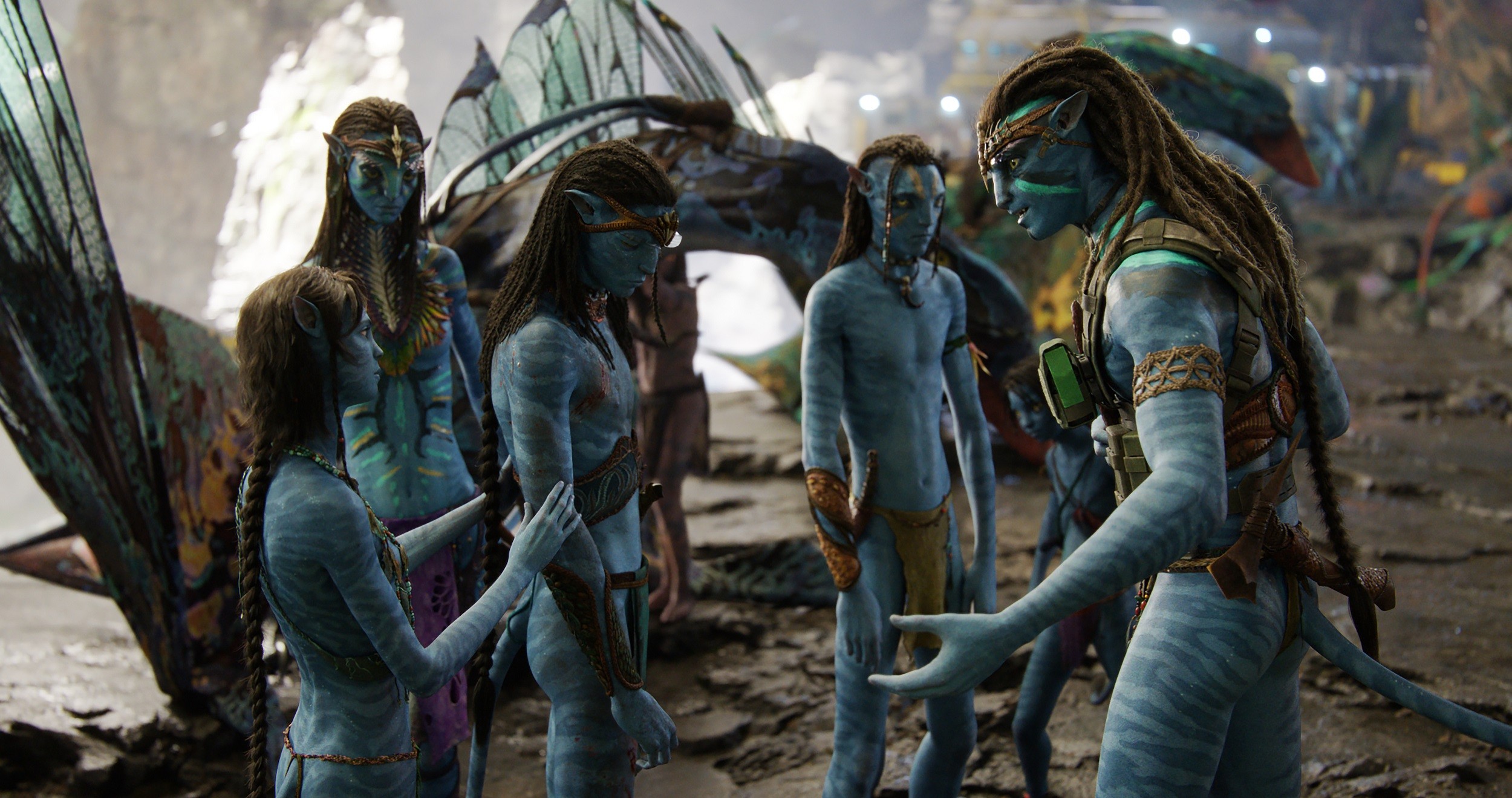
Anyway, the film starts as we see Jake Sully (Sam Worthington) fully settling into his life as a Na’vi. From leading his clan alongside his wife Neytiri (Zoe Saldana), to even raising children on the planet. Then everything changes. As alluded to in the first film, the humans from Earth return to Pandora, not content with abandoning the location to the indigenous population. This time, they return in force. The Na’vi are unable to hold off the colonizers this time, and instead must take refuge; striking back in guerilla style raids even as the humans continue to expand.
The goal this time isn’t simply a valuable mineral, but rather habitation. “Earth is dying” as one character succinctly puts it, and Pandora is now being looked at as a new home for humanity. They’ll just need to eliminate/pacify the natives in order to do so.
Here’s the thing, however, that’s NOT what this story is about. In fact, within the first few minutes, the story jumps ahead by a year, showing how Jake and his forest clan of Na’vi have become a “resistance” even as the humans build up a far larger base than before. Thus, we are thrust head first into a war that’s been on-going.
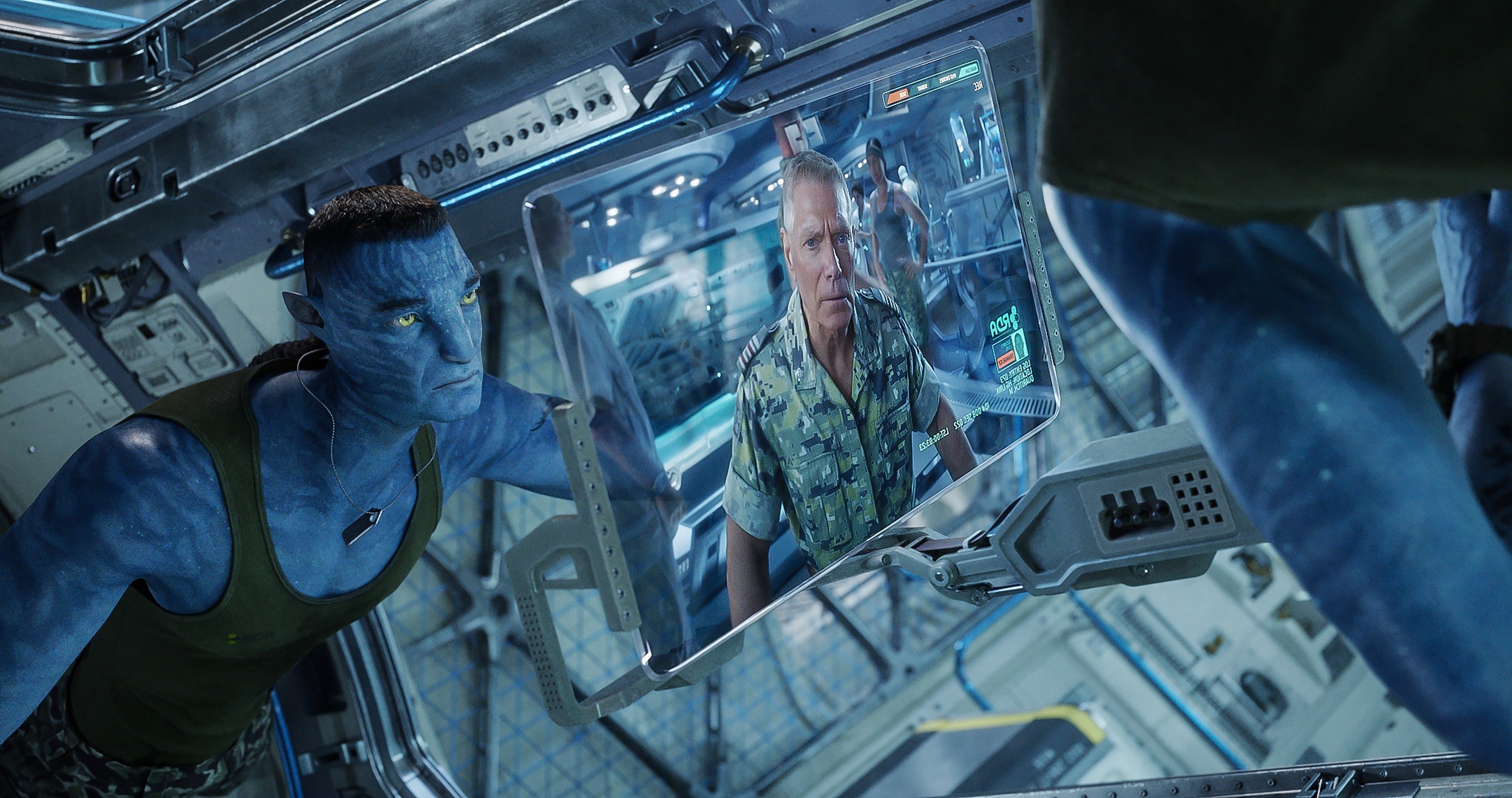
Jake Sully must balance life as their warrior leader “Toruk Makto” and a father…but soon discovers that might not be possible. As an old enemy, Stephen Lang’s Quaritch, returns from the dead in new form, Jake will have to make some tough calls. In order to protect his people and, more specifically, his family they travel to a different part of the world in an attempt to hide and start a new life free of war.
As their family finds refuge among one of the Water Clans, the Metkayina, they must all adjust to new ways of doing things. Just as they seem to find a groove in their new life, however, the war comes to their shores and Jake must decide whether or not to keep running, or take up the mantle of Toruk Makto once again.
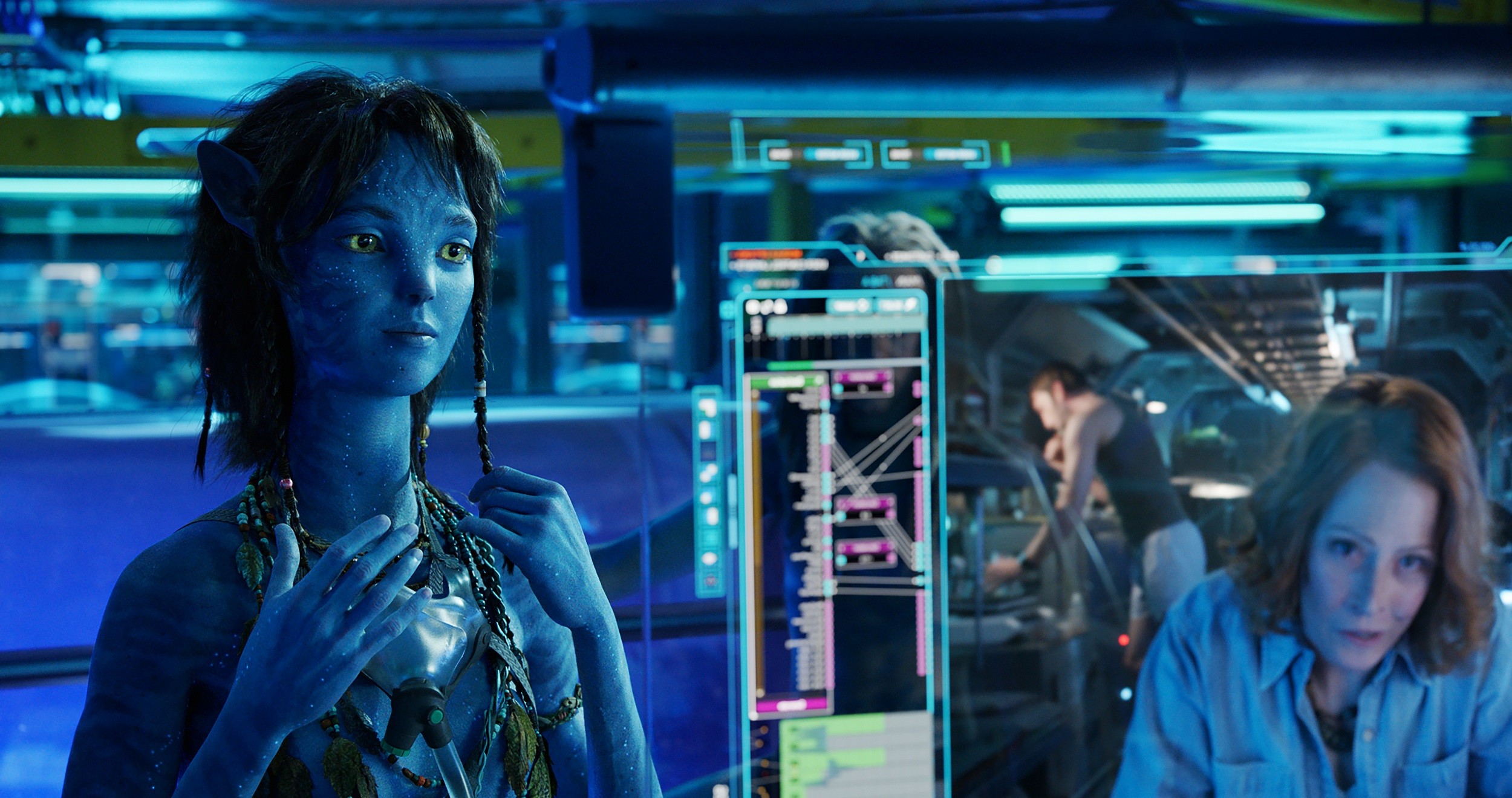
A Family Tale
These are the very BASICS of the overall story, but I don’t want to dive much deeper into it than what I have. Ostensibly, it’s a rather straightforward story this time around. With the addition of some intriguing subplots with the kids, and some powerful themes on love, loyalty, and loss, it remains a gripping story.
The Way of Water manages to strike an interesting balance. In many ways, the story this time around is far more narrow and keeps the focus pretty tightly on the family drama. Unlike the first film, this isn’t a story about rescuing the people/planet, but a more intimate tale about the ties of family, community, and what people can accomplish together. Even with that focus, however, the film manages to be even more expansive than the first movie.
The world of Pandora feels even more complex as we, along with the characters, uncover new facets of the planet (and its inhabitants). We’re getting a more complete picture of the planet as a whole, and the understanding that we’re only just scratching the surface of the wonders and mysteries it can hold. Couple with the tighter story, and The Way of Water manages to feel both epic and intimate while you’re watching.
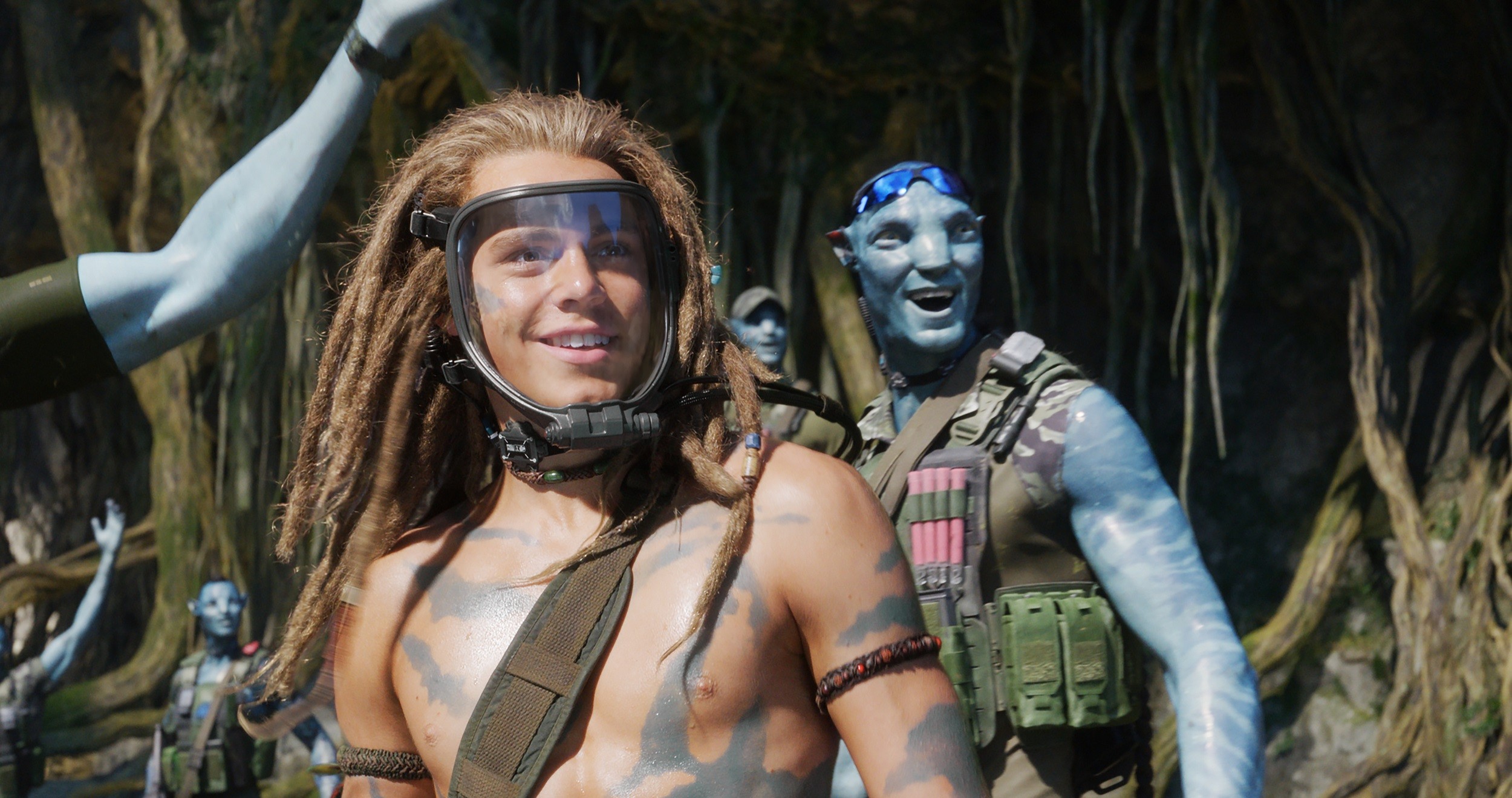
Without getting into the specifics, I loved the how family remained at the heart of the story this time. As a father myself, I found it easy to empathize with Jake and his predicament (even as I disagreed with some of his choices). Sure, not every subplot works well. A specific one between the two brothers felt half-hearted and forced, but the overall affect is highly engaging.
Along this train of thought, I was impressed with how quickly I became attached to the new, kid, characters. Each features their own distinct personality and quirks. The film does an impressive job of capturing the simultaneous vibe of constant conflict and loyalty inherent to most sibling relationships. Despite being new characters—and essentially rushing through major parts of their early life before getting to the ‘meat’ of the story—I became attached to them almost effortlessly. Even among returning characters from the last film, the kids manage to be a highlight both emotionally and in terms of the story.
Considering some of the main complaints about the first film dealt with characters not being memorable enough, or having an impact, I’d say The Way of Water absolutely succeeds. By the end of the film, I found myself eager to see what’s next for these new characters and where they go next in the third film.
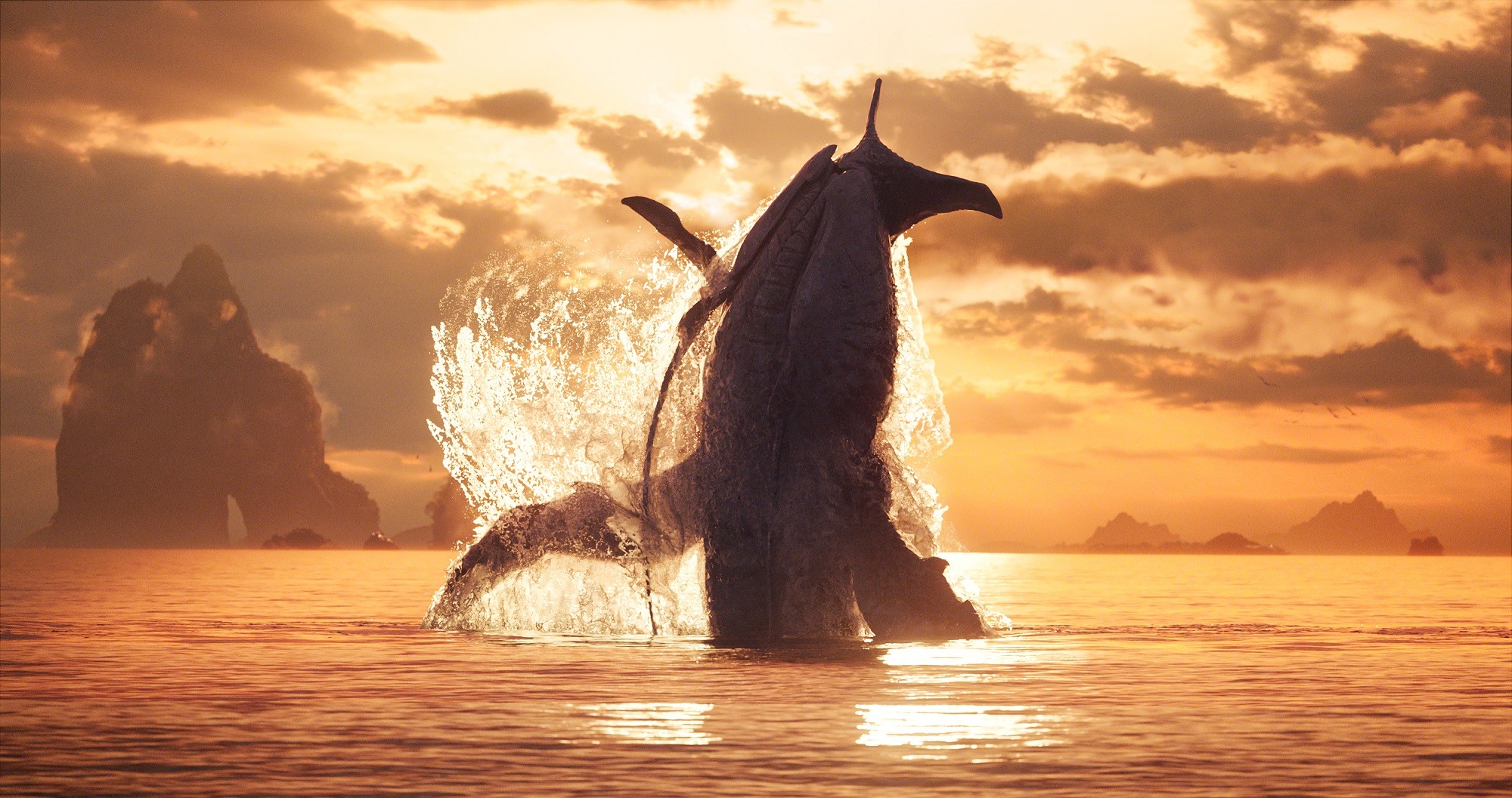
Aggressively Beautiful
It’s hard to NOT talk about how good looking Avatar: The Way of Water is. If you thought the first film pushed the boundaries of technology, it’s nothing compared to what’s on display here. Even if you take away the VFX (the Na’vi look and feel REAL), it’s a beautifully shot film. James Cameron is a master of his craft, and that’s on display in every shot. From the “basics” of composition, to how he frames certain action elements, the film is a visual treat top to bottom.
The VFX work on the characters are undeniably impressive and I fell into believing these characters truly existed almost instantly. I think there were a couple moments where “uncanny valley” hits, but they were so fleeting and far between that it never once took me out of the moment.
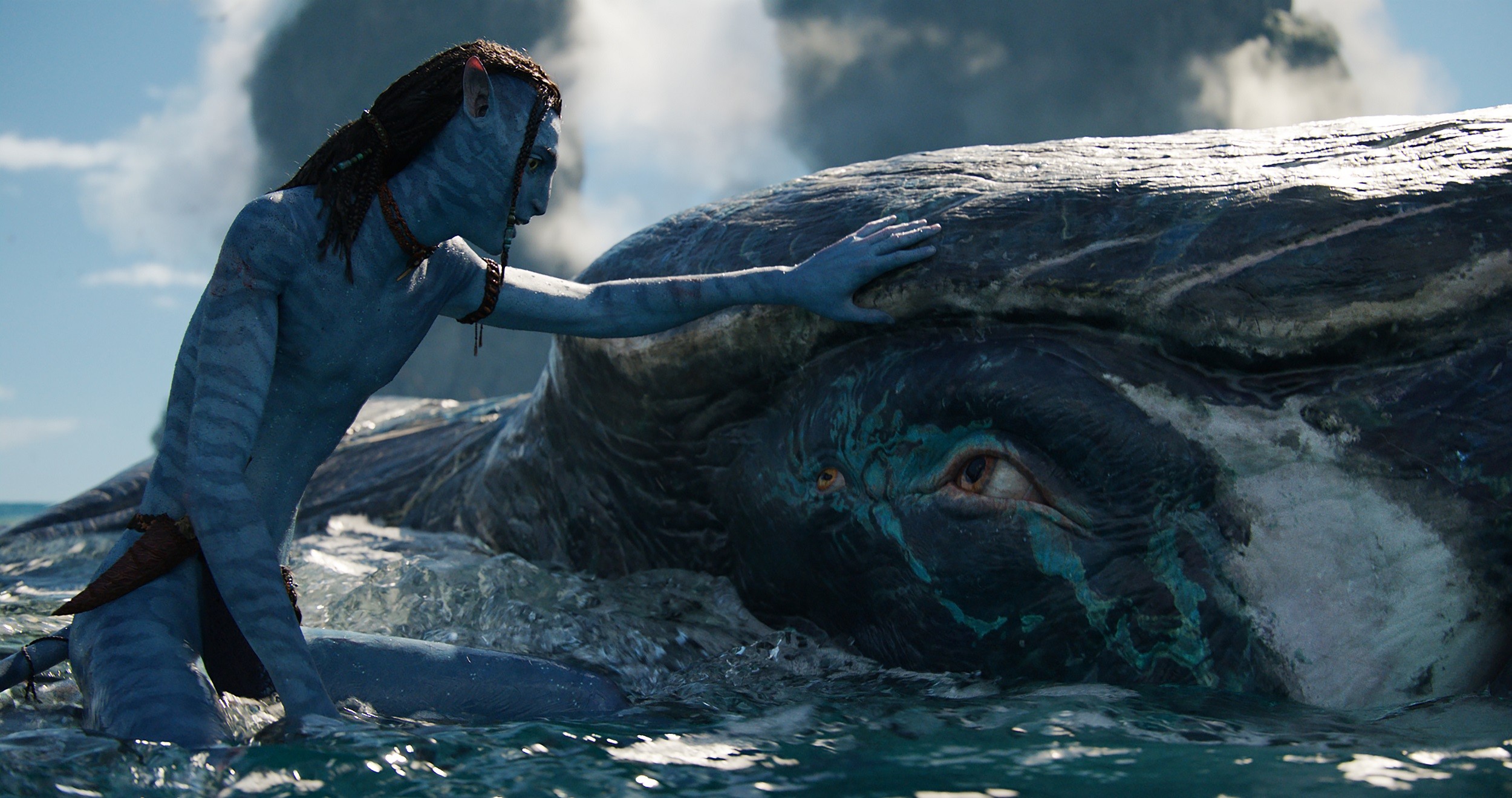
Similarly, the creature designs are on another level as well. The world of Pandora remains as fantastical as ever, but the depth in the visuals makes it feel more full of life than ever before. Rather than simply watching these strange creatures on the screen, it feels like we’re genuinely watching an ecosystem interact with one another. Like a real window into another world.
Generally speaking, I know that “great visuals” shouldn’t be a primary selling point for a film. I’ve watched plenty of amazing looking films that were only “okay” at best. Yet, with The Way of Water, it’s impossible to avoid talking about.
The film is aggressively beautiful, to the point where it actively impacts the way you watch the story and characters on the screen. Seriously, in any other movie, I could give two shits about seeing a kid swim around with a whale. And yet here, it’s a sequence that brought me to tears and impacted my emotional connection in the final act of the movie.
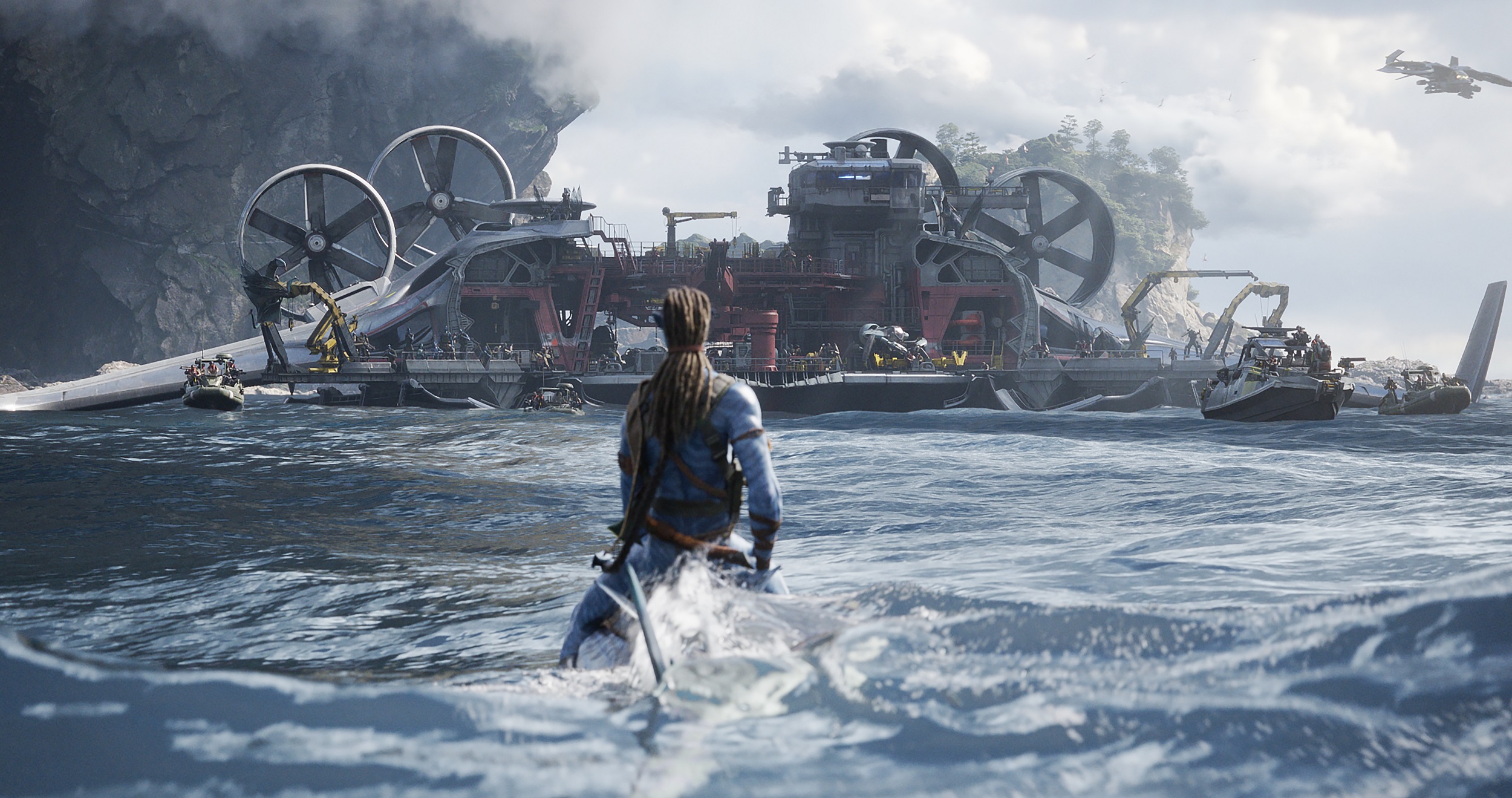
The same could be said for a number of scenes in the film. Don’t get me wrong, The Way of Water does a fantastic job of endearing you to the characters (especially the new, younger generation), but a large factor in that engagement comes down to the beauty of seeing them interact with the world.
If the goal of a film is to transport its audiences to another place, The Way of Water succeeds in ways some films can only dream of accomplishing. As you see myself, and other critics, continually laud the visual spectacle even above the story/character elements, that’s the primary reason.
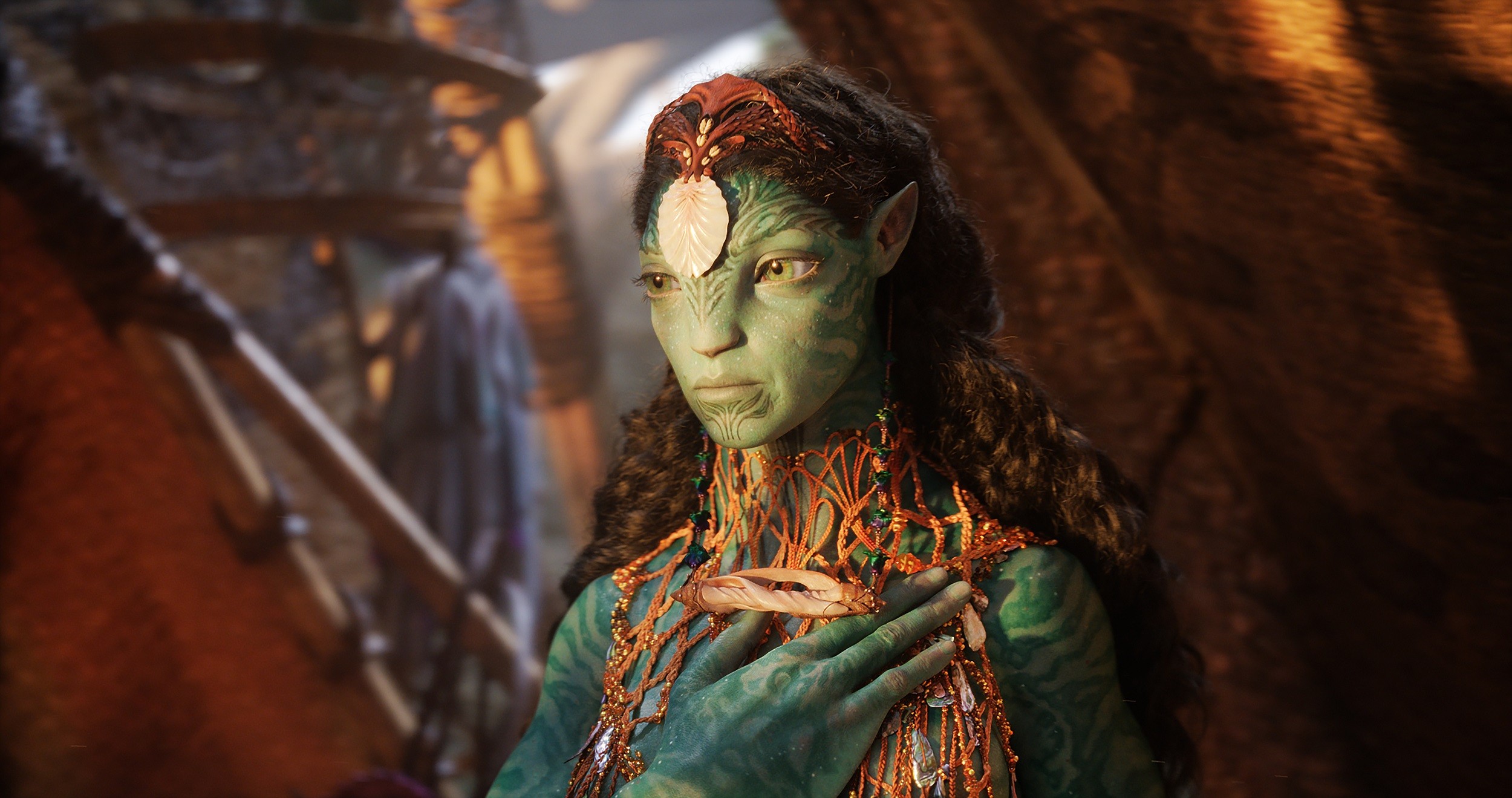
It’s Long
As you can imagine, The Way of Water is a LONG film. For the most part, however, the pacing of the story manages to make that 3-hour+ run time go by fairly quickly. That said, there are a couple stumbles in the first act of the film. Mostly, this is due to the movie having to cover quite a bit of ground before moving ahead with the new story.
Years of time have passed, and the movie does it’s best to play catch-up. As such, some of the earlier scenes feel a bit disparate as it works to cover that ground, while introducing new stuff along the way. The same could be said for a few of the sequences when their family first arrives at the Metkayina. We’re essentially treated to montages of the characters adjusting and learning new stuff.
At first, many of these moments seem just…there. They exist and show stuff, but don’t seem to have any connective thread to a larger story. And yet, looking back on it in the context of the full movie, I can’t imagine NOT having those moments. They add a great deal of depth and beauty, giving certain moments in the final act (which is essentially an hour of wholesale action-movie ass whipping) more emotional gravitas.
That said, I can see why you may feel a bit of “boredom” in that first section of the film. It all pays off, however, with a few things definitely planting the seeds for more story in the next film.

